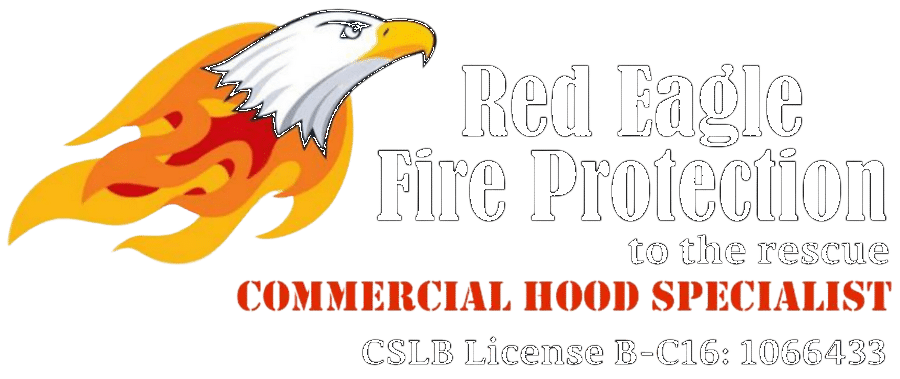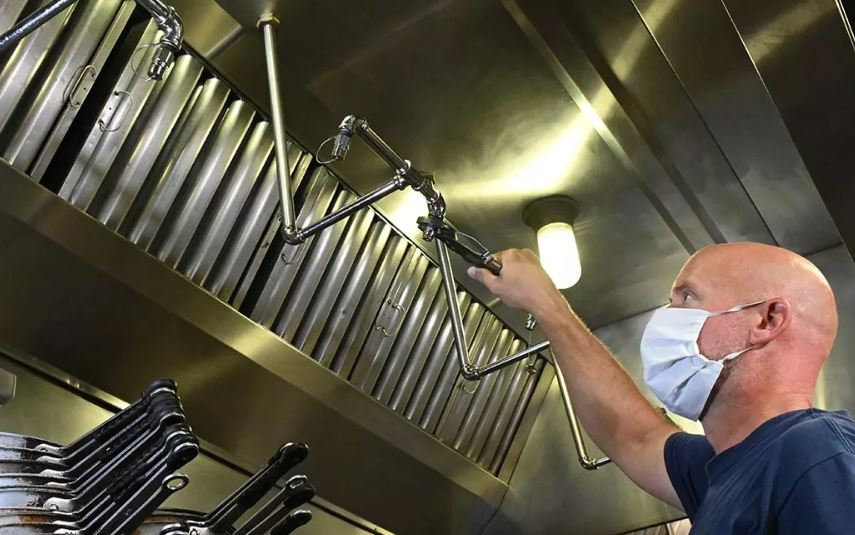In the bustling realm of culinary enterprises, one key component that often goes unnoticed is the restaurant hood system. This critical piece of equipment serves to maintain safe and clean kitchen environments, extracting heat, smoke and airborne grease that naturally occur during food preparation.
While their importance is undeniable, the intricacies of hood system maintenance, particularly the costs associated with repairs, can be daunting for many restaurateurs. Understanding the various factors that influence these repair costs, from the severity of the issue to labor rates, can provide significant insight for effective budgeting and preventive maintenance.
As we explore the nuances of restaurant hood repair costs in the sections to follow, you will be better equipped to anticipate and manage these expenses in your own establishment.
Importance of Restaurant Hood Systems
Safeguarding the health and safety of restaurant staff and customers, the restaurant hood system plays a pivotal role in the commercial food preparation environment. It is more than a necessary compliance to health regulations; it is an essential component that ensures the well-being of all parties involved.
The primary function of the restaurant hood system is to capture and filter out smoke, heat, grease, and other airborne particles generated during cooking. This process is crucial in maintaining a clean and safe kitchen environment, preventing potential health hazards such as respiratory problems or fire incidents.
Additionally, a well-maintained hood system contributes to the overall efficiency of the restaurant. It reduces energy consumption by promoting better air circulation and heat control, leading to a more comfortable and productive work environment.
Furthermore, it prevents damage to kitchen appliances and surfaces, saving significant costs in maintenance and replacement. Therefore, understanding the importance of the restaurant hood system not only highlights its role in health and safety but also its contribution to the operational efficiency and cost-effectiveness of the restaurant business.
Common Hood System Issues
Despite the vital role of the restaurant hood system, various common issues can arise, potentially compromising its functionality and safety. The hood system is an essential part of the kitchen, responsible for maintaining air quality and minimizing fire risks. However, it can become a source of concern when it starts to malfunction.
1. Clogged Filters: Over time, grease and other particles can accumulate in the hood filters, leading to decreased air flow and increased fire hazards. Regular cleaning is vital to prevent this blockage, but in some cases, a professional repair service may be required.
2. Faulty Fan Motor: The fan motor is the heart of the hood system, driving air circulation. A dysfunctional motor could result in inefficient ventilation, causing a buildup of heat and smoke in the kitchen. This issue requires immediate attention and professional repair.
3. Damaged Ductwork: The ducts within the hood system can become damaged due to excessive heat and grease buildup. This can lead to leakage and inefficient extraction of fumes, posing significant safety risks.
Understanding these common issues can help restaurant owners anticipate potential repairs, ensuring the longevity and effectiveness of their hood systems.
Factors Influencing Repair Costs
Given the potential issues that can plague a restaurant’s hood system, it’s vital to understand the various factors that can influence the cost of its repair.
The first factor to consider is the severity and nature of the damage. Minor issues such as clogged filters or faulty switches may be relatively inexpensive to fix. However, extensive damage from fire or corrosive substances could require the replacement of significant parts of the system, escalating repair costs.
The type of hood system is another determinant of repair costs. For example, Type I hoods, which handle grease and smoke, may involve more complex repairs than Type II hoods, used for steam, heat, and odor removal.
The third factor is labor costs. These can vary based on the complexity of the repair, the experience of the technician, and regional rates.
Lastly, the age and model of the hood system can influence repair costs. Older or discontinued models may require special parts or more time-consuming repairs, hence increasing the cost. By understanding these factors, restaurant owners can make informed decisions when facing hood system repairs.
Average Cost of Hood Repairs
While the cost of repairs can vary greatly depending on the factors mentioned earlier, the average cost for restaurant hood system repairs typically ranges from $200 to $500. This amount includes the cost of parts, labor, and any additional services that may be needed to ensure the system is functioning correctly.
1. Impact of repairs on business operation: Unplanned repair costs can impact a restaurant’s bottom line and disrupt regular operations. The cost of downtime and potential loss of revenue during repairs can be significant.
2. Preventative maintenance costs: Regular servicing can prevent major breakdowns and costly repairs. The cost of preventative maintenance will usually be less than the cost of extensive repairs or replacement parts.
3. Emergency service costs: In case of emergency repairs, the costs can rise significantly due to the urgency of the situation. Emergency service fees, overtime labor costs, and expedited parts delivery can all add to the final bill.
Understanding these factors can help restaurant owners budget effectively for hood system maintenance and repairs. It also underlines the importance of preventative maintenance to avoid sudden, costly repairs. Remember, a well-maintained hood system is not just a regulatory requirement, but a crucial part of a safe and efficient kitchen.
Tips to Minimize Repair Expenses
To effectively minimize repair expenses, restaurant owners should adopt strategic maintenance practices that prioritize the longevity and efficiency of their hood systems, especially after hood repair. This begins with routine inspections. Regularly reviewing the hood system allows for the identification of potential issues early before they escalate into costly repairs
Moreover, implementing a strict cleaning schedule is crucial. Grease build-up not only poses fire risks but also strains the hood system, leading to potential breakdowns. Professional cleaning services are recommended at least every six months, depending on usage.
Investing in quality replacement parts when needed is equally important. While it may seem costlier upfront, high-quality parts ensure better performance and durability, reducing the frequency of future repairs.
Training staff on proper use and basic troubleshooting of the hood system can also prove beneficial. Misuse or neglect can contribute to unnecessary damage and repair costs. Therefore, it is worth investing in some basic training to prevent such issues.
Lastly, consider an annual maintenance contract with a reliable service provider. While this entails a regular outlay, it can lead to significant savings in the long run by preventing major malfunctions and ensuring the system operates at peak efficiency.

